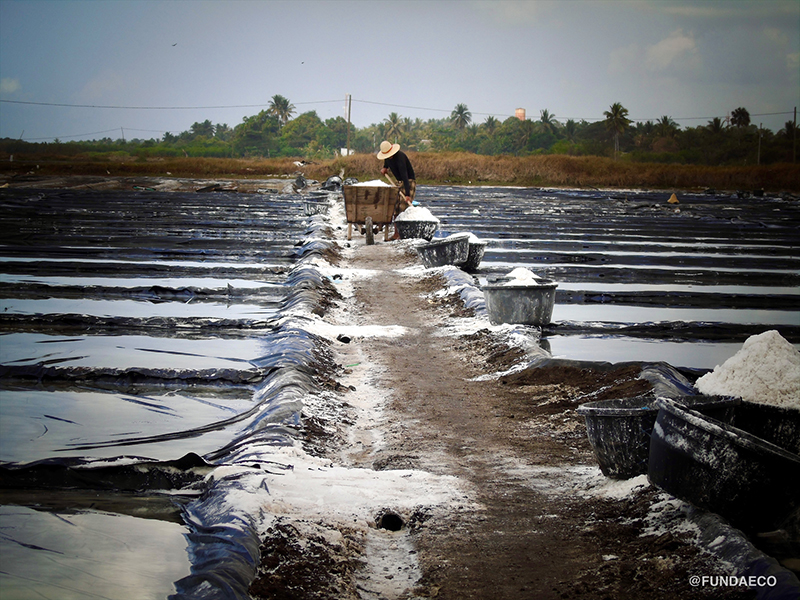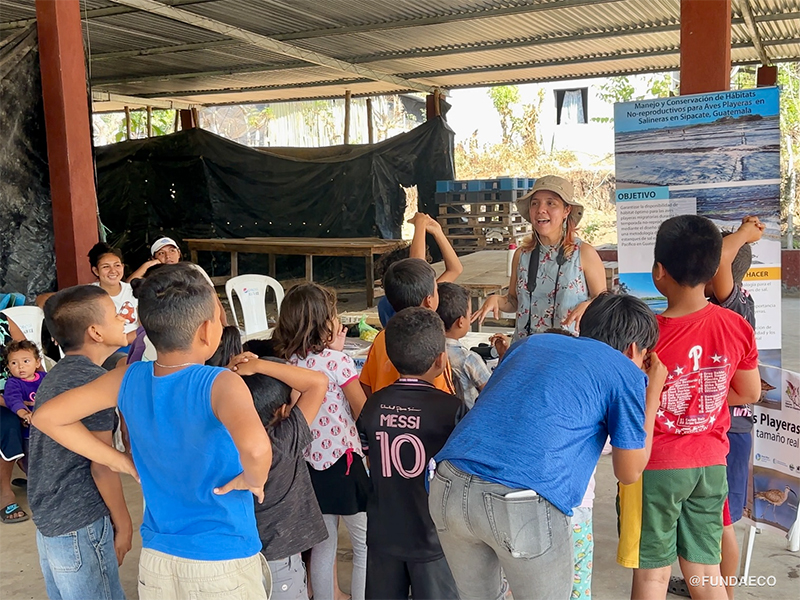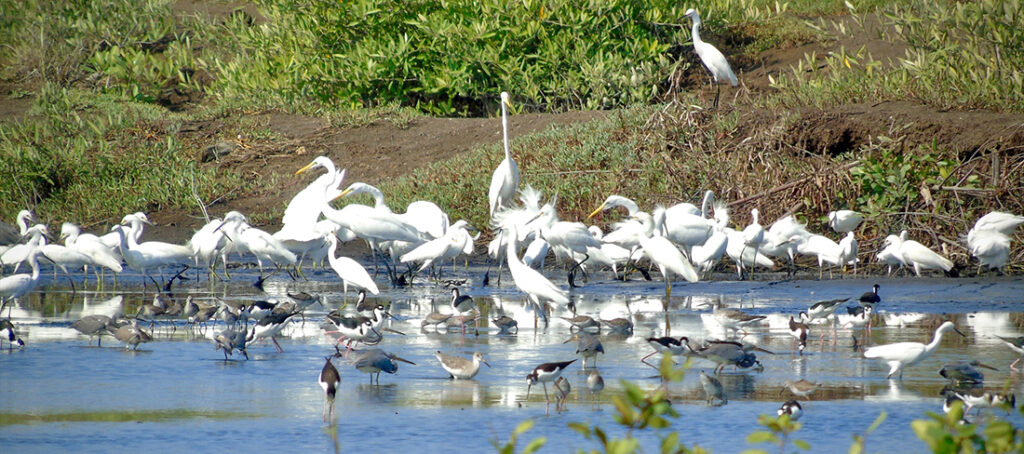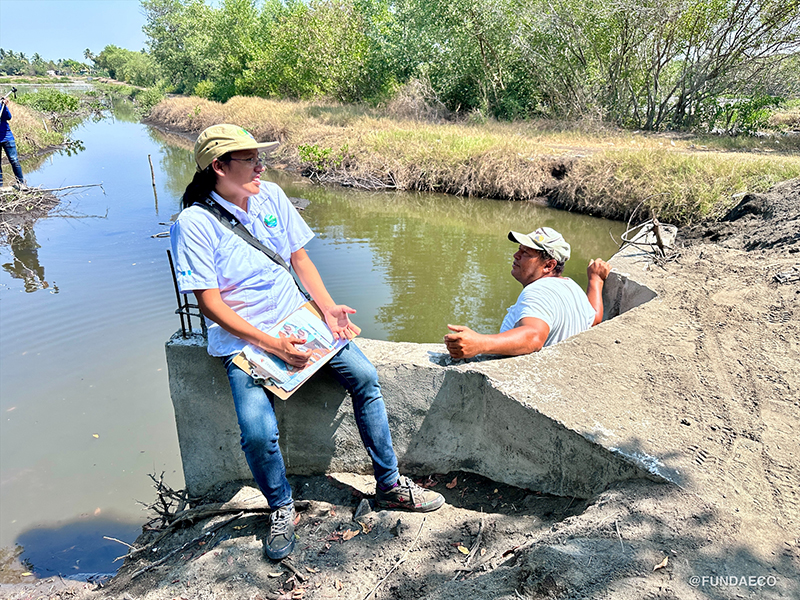Management and conservation of non-breeding habitats for shorebirds in salt ponds in Sipacate, Guatemala
The objective of this project is to identify management measures in salt production to increase the availability of habitat for migratory birds during the non-breeding season.

Project Summary
Salt production on the Pacific coast of Guatemala is mainly artisanal and represents an important economic activity for local communities. In the last five years FUNDAECO discovered that, along with mud flats, salt flats provide one of the main sources of food and rest for shorebirds. FUNDAECO observed that for parts of every year, the salt production ponds were not available to birds. The goal of this project was to determine if it could be possible to identify water management measures to create habitat for shorebirds in the salt ponds throughout the year.
How MSP+ Helped
MSP+ funding allowed FUNDAECO to not only produce important data about the conservation biology of migratory shorebird species, but also learned how to benefit them through the management of water levels in the salt flats. They achieved this by: (1) building two gates that allow the entry and exit of water, thus achieving proper levels to create shorebird habitat; and (2) developing an environmental education program and designing teaching materials focused on shorebird conservation.
“During the implementation of the project, collaboration with salt producers allowed us to understand their needs and how to work together to conserve shorebirds and their habitat. We learned the potential that salt ponds have as places for tourism not only focused on birds, but also on the salt production operation itself. It has also been possible to formulate possible strategies for the conservation of shorebirds and their link with the salt ponds and people who work there.”

Key Results
For seven months, information has been gathered on the necessary procedures to carry out the management of water levels that can favor the presence of shorebirds in the salt ponds.
Continuous monitoring was carried out for 10 months, during which 23 species of shorebirds and more than 4 thousand individuals were recorded. Among the most outstanding are the Red Knot (Calidris canutus), Hudsonian Godwit (Limosa haemastica), Long- billed Curlew (Numenius americanus), and Semipalmated Sandpiper (Calidris pusilla).
Awareness-raising activities have also been carried out towards the conservation of shorebirds in the community, including workshops in which children, young people, and women participated in activities such as bird watching, games, stories, and festivals.

Key Partners
French Fund for the Global Environment (FFEM)
What might be next?
During the project, best practices for the management of artisanal salt ponds were identified, but it will be necessary to carry out tests on a larger sample of salt ponds, to generate standardized practices that can be promoted throughout Guatemala. FUNDAECO is currently raising funds to continue testing in additional salt ponds.

